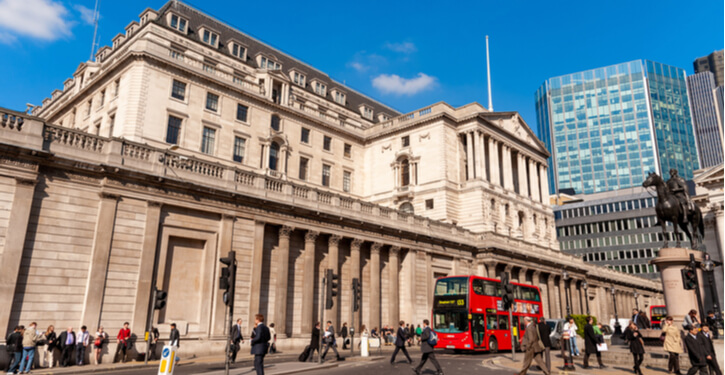The pound to Indian rupee (GBP/INR) exchange rate pulled back from its all-time high as investors refocused on the upcoming Bank of England (BoE) decision and the potential for a divergence with the Reserve Bank of India. The pair ended the week at 107.68, down from its all-time high of 108.93.
Bank of Englan decision
The biggest GBP/INR news of the coming week will be Thursday’s Bank of England (BoE) interest rate decision.
Economists are torn on what the BoE will do after the recent mixed economic data. On the positive side, the headline Consumer Price Index (CPI) has dropped to the bank’s target of 2.0%. However, service inflation and the core CPI have remained above 3%.
The case for cutting rates has been enforced by the relatively weak economic data from the country. Retail sales have retreated while house prices have continued rising, with the recent data by Halifax showing that prices have risen by 1.6% this year.
Another report that could influence the BoE to cut is the labour market. While the economy has continued to add jobs, the unemployment rate has risen to its highest point in over two years.
The BoE, like the Federal Reserve, has a dual mandate of ensuring that the unemployment rate and inflation are low. It generally hikes rates to slow inflation and cuts them to incentivise growth and improve the labour market.
On the other hand, the UK economy has been more resilient than expected. A recent report showed that the Gross Domestic Product (GDP) grew by 0.4% in May, double what analysts were expecting.
A recent report by S&P Global showed that the manufacturing and services PMI numbers did well this month as they remained above 50 in July. The manufacturing figures in the US and the European Union were below 50.
Huw Pill, the bank’s Chief economist has become one of the most hawkish members. In a recent statement, he warned about the persistence of inflation and warned that the bank would consider waiting before cutting rates. He said:
“The MPC needs to ensure that the degree of cumulative restriction in the monetary policy stance is sufficient to ensure that the persistent dynamic in recent inflation indicators is squeezed out of the system.”
Despite all this, many economists are leaning towards a rate cut in this meeting. If this happens, the bank will cut rates by 0.25% for the first time since the pandemic.
The BoE’s decision will come a day after the Federal Reserve leaves rates unchanged. Other global banks have started cutting rates. The European Central Bank (ECB), Riksbank, Bank of Canada (BoC), and the Swiss National Bank (SNB) have cut rates.
Reserve Bank of India (RBI) decision
Meanwhile, there are signs that the Reserve Bank of India (RBI) is not in a hurry to cut rates since inflation has remained at an elevated level. The most recent data revealed that the headline Consumer Price Index rose to 5.08% in June from the previous 4.80%.
The CPI has remained above the RBI’s target rate of 4.0% for a long time. Most of this inflation has been because of the stubbornly high food prices.
Therefore, the RBI has hinted that interest rates will remain higher for longer, with most analysts expecting it to start cutting in the first quarter of 2025.
The RBI is more flexible when it comes to cut rates because the economy is firing on all cylinders. Earlier this week, the government unveiled a budget that will lead to more infrastructure investments.
Economists believe that the economy will grow by over 7% this year. If this trend continues, the Modi administration hopes that it will become the third-biggest economy in the world in the next few years.
Still, the biggest RBI concern is that the Indian rupee has fallen sharply this year, a move that could spur more inflation. As such, the bank could intervene as we saw with the Bank of Japan recently.
GBP/INR forecast
GBP/INR chart
The daily chart shows that the pound to INR exchange rate rose to a record high of 108.93 earlier this week. It then suffered a big reversal as traders focused on the upcoming BoE interest rate decision. This retreat happened after the pair formed an evening star candlestick pattern.
Despite the pullback, the GBP/INR pair remains above the 50-day moving average, which is a positive thing for the sterling. It is also above the 23.6% Fibonacci Retracement point and the crucial resistance point at 107.25, its highest level on June 12th.
Therefore, the most likely scenario is where the pair drops and retests the support at 107.25 and then resumes the bullish trend. This situation is known as a break and retest pattern and is one of the most popular signs of a bullish continuation.
The post Pound to rupee (GBP/INR) has reversed ahead of BoE decision appeared first on Invezz
